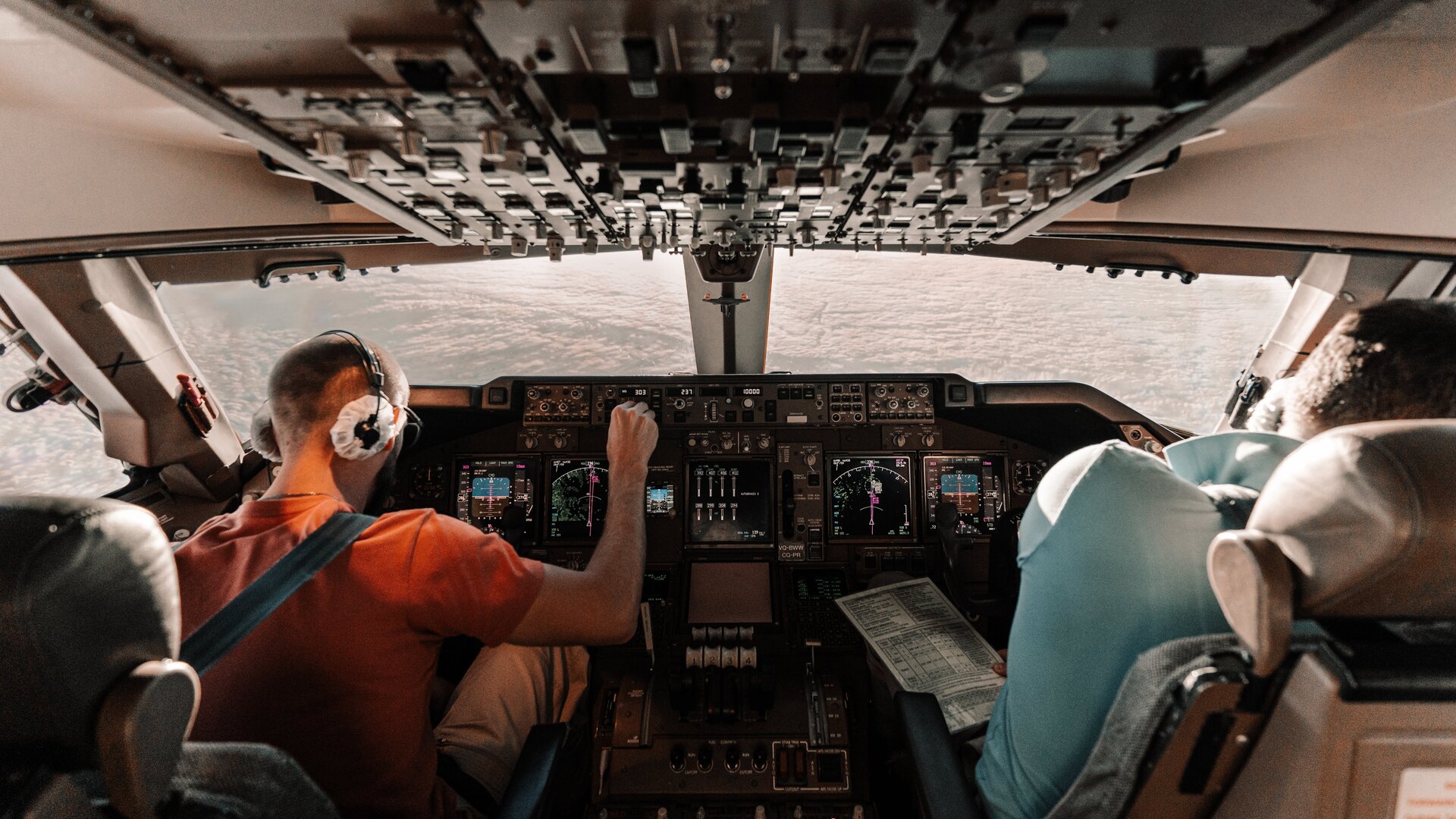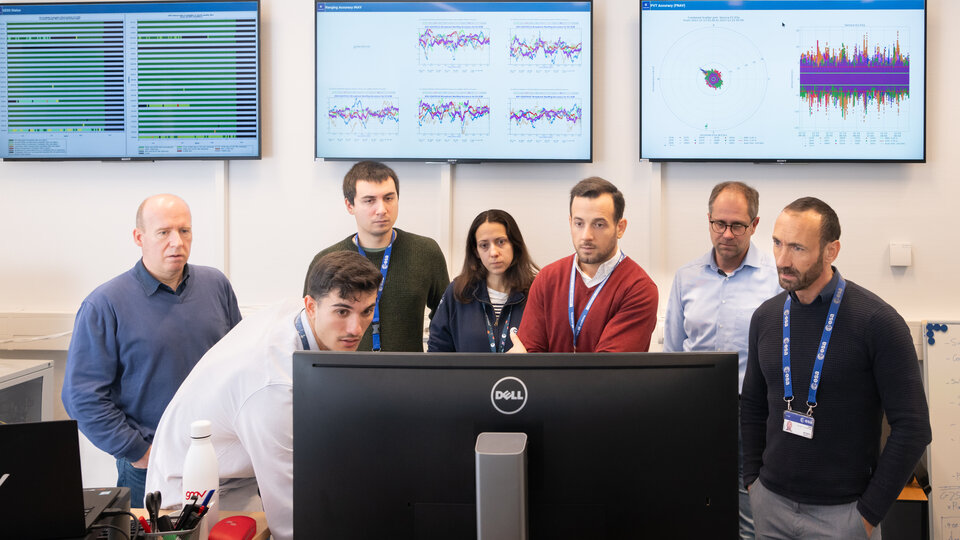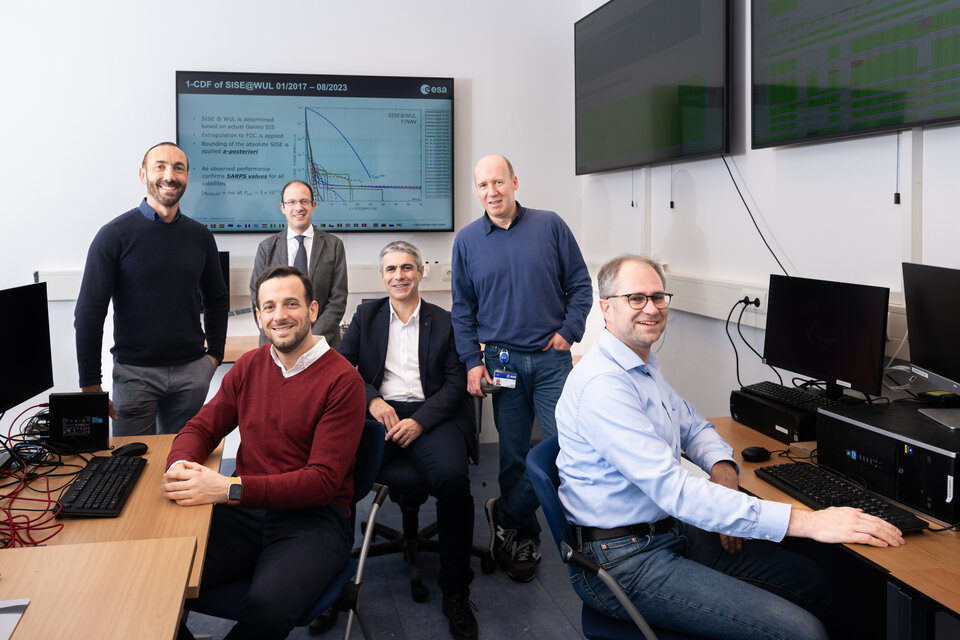Galileo, now fit for aviation
Galileo, already the world’s most precise satellite navigation system, now meets international standards to guide civil aviation from take-off to landing, complementing Europe’s EGNOS for the most critical operations. Galileo was not designed to comply with these strict safety requirements, so how did engineers at ESA achieve this feat? This is a tale of engineering excellence.
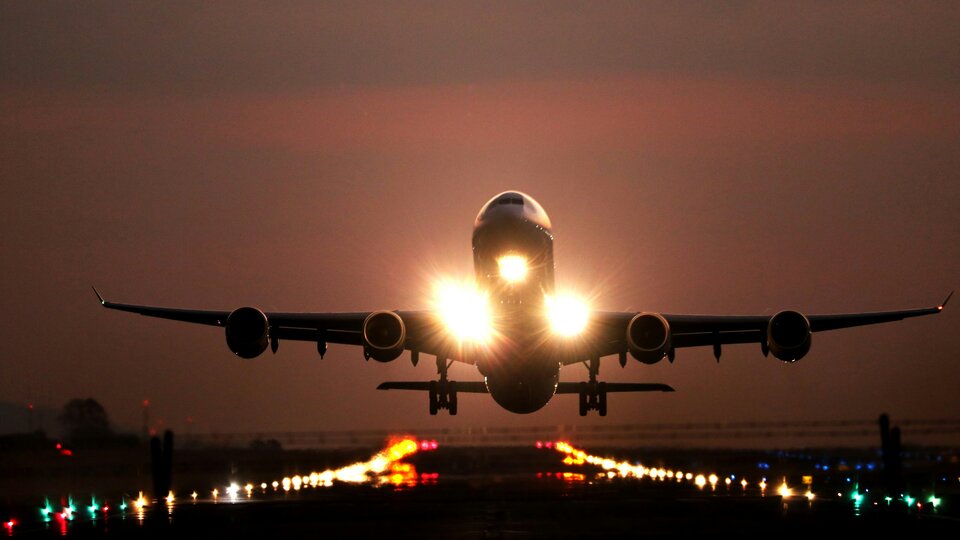
In civil aviation, especially for critical stages such as final approaches, navigation systems need to be extremely reliable. The International Civil Aviation Organization (ICAO) defines the strict requirements that systems need to fulfil to be used in these so-called Safety-of-Life operations, where a malfunction of the system would lead to major human or environmental catastrophes.
Galileo was never designed to comply with these rigorous integrity standards as Europe already had EGNOS, a dedicated Safety-of-Life system for navigation. EGNOS ‘augments’ GPS signals for critical operations in aviation, maritime navigation, agriculture and more. But in 2016, ESA joined forces with the European Commission (EC) and the EU Agency for the Space Programme (EUSPA) to elevate Galileo’s reliability and make it fit for civil aviation, as a standalone support system during en route and augmented by EGNOS at take-off and landing.
With 18 satellites already orbiting the Earth in 2016, and the deployment of the remainder in full swing, redesigning the whole system was not an option, so the team buckled down with flexible thinking and a creative mind, in true ESA style, to push the boundaries of engineering.
Galileo, strong since born
Since Galileo’s first position fix in 2013 and as the constellation grew, it was clear to ESA engineers that it was a sturdy navigation system, already meeting and exceeding all expectations. “Galileo was not even in service yet when from the EGNOS team we suggested it should be used for civil aviation – that is how confident we were about its performance,” remembers ESA Head of EGNOS and SBAS Division Didier Flament.
With precious support from European industry, most notably Thales Alenia Space and Airbus Defence and Space, the team set to gather evidence of Galileo’s robustness and reliability. They scrutinised nearly one million in-service hours, looking closely at every anomaly and its magnitude, duration, root cause and impact. They found that only six events in the history of Galileo exceeded the standards set by ICAO, and none of them were affecting more than a single satellite at a time.
Modify, retune, strengthen

The next step was to modify the system to mitigate the effects of the (very few) potential malfunctions. The only leverage was the intricate ground segment, as the satellites were already in orbit. “The solution was not obvious at all! We threw many and varied ideas on the table when we were looking for the right solution, from adding more stations to using data from the anticipated High Accuracy Service,” explains Galileo Safety-of-Life System Engineer Santiago Perea.
Finally, ESA engineers devised a set of strategic actions to improve the detection of faulty measurements by adding barriers in the ground segment and to notify receivers to exclude these defective readings from their calculations. “In the end, not a single infrastructure or hardware element was touched; we improved the monitoring and notification capabilities of Galileo purely by retuning the software in the ground segment,” explains Stefan Wallner, Head of Galileo Signal-in-Space Engineering Unit.
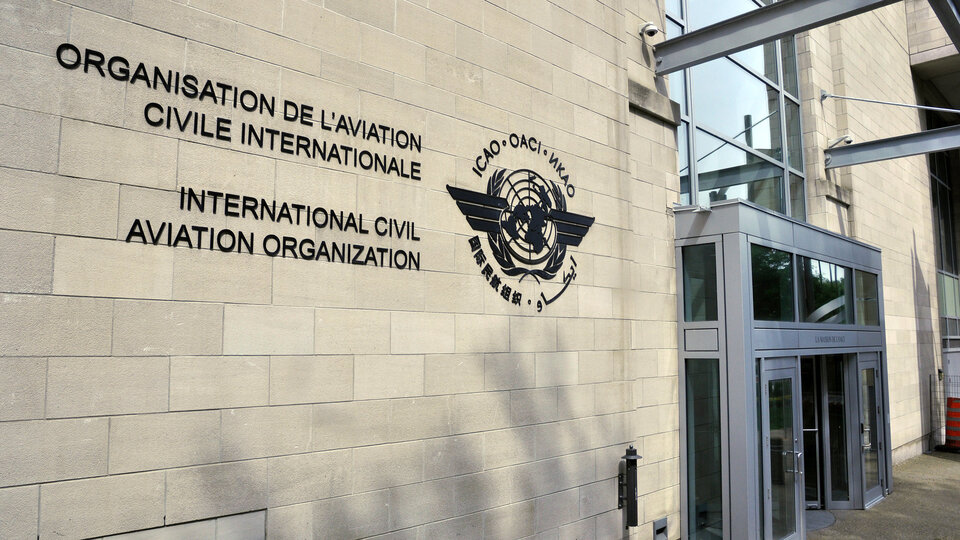
Equipped with a dossier packed with evidence of Galileo’s reliability and having provided a commitments checklist to EUSPA, the Galileo partnership approached ICAO, who finally endorsed Galileo for Safety-of-Life civil aviation operations in March 2023.
Safer skies with European satellite navigation
With this achievement, ESA is changing the game for aviation, as now European satellite navigation can guide every phase of a flight.
In practical terms, this means that aircraft manufacturers can now build receivers which autonomously monitor Galileo (together with GPS) signal integrity without the need for external corrections or fault detection to support non-critical phases of flight, including parts of the ascent, descent and enroute. In addition, Galileo is now ready to be augmented by the new version of EGNOS to support critical operations like landing, where satellite navigation systems like Galileo or GPS alone cannot offer enough reliability.
“This technological achievement has been possible thanks to ESA’s extraordinary in-house talent and to the excellent performance of Galileo: the system has shown high flexibility and adaptability to adhere to demanding standards it was never designed for,” remarks ESA’s Head of Galileo System Engineering Jörg Hahn.
The long-standing cooperation between ESA with its partners EC and EUSPA, as well as with the European Union Aviation Safety Agency (EASA), air navigation service providers and other national authorities has also been crucial in this success story.
The second generation of the Galileo programme, now under development, will take a step further: a new facility will generate an Integrity Support Message that will tell the user the system can be trusted. An engineering prototype is already testing this new feature at ESTEC, ESA’s technical heart in the Netherlands. All developments go hand in hand with the implementation of EGNOS V3, capable of augmenting not only GPS but also Galileo, making European and global skies even safer.
About Galileo
Galileo is currently the world’s most precise satellite navigation system, serving close to four billion users around the globe since entering Open Service in 2017. All smartphones sold in the European Single Market are now guaranteed Galileo-enabled. In addition, Galileo is making a difference across the fields of rail, maritime, agriculture, financial timing services and rescue operations.
Galileo is a flagship programmes of the EU Space Programme, managed and funded by the European Union. Since its inception, ESA leads the design, development and qualification of the space and ground systems, as well as procuring launches. EUSPA (the EU Agency for the Space Programme) acts as the service provider of Galileo, overseeing the market and application needs and closing the loop with users.
For more info about Galileo: https://www.usegalileo.eu/EN/


